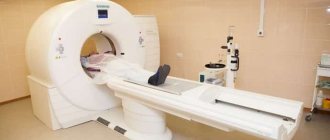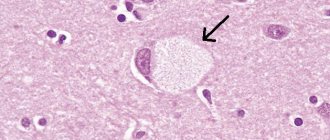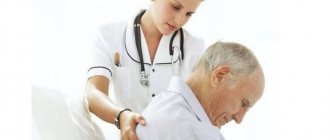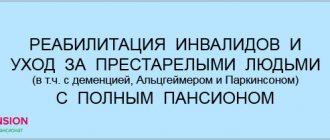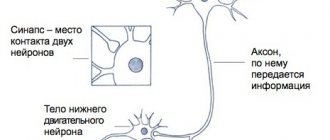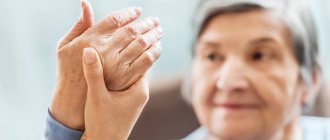Local therapist
Ablyazov
Irshat Ravilevich
20 years of experience
Local therapist of the highest category. Member of the Russian Scientific Medical Society of Therapists.
Make an appointment
The common cold is the colloquial name for a whole group of acute inflammatory diseases of the upper respiratory tract. Hypothermia is only one of the reasons that provoke their appearance. But in most cases, we associate such a disease with hypothermia. This is because most often it occurs in the cold season, when the body is weakened and exhausted, and people spend most of their time indoors, exchanging viruses and bacteria. But the medical record of a patient with a cold usually indicates the official name of the disease - ARVI (acute respiratory viral infection), or ARI (acute respiratory disease).
Another popular expression is a cold on the lip. This is an exacerbation of a herpes virus infection, which can also partly manifest itself against the background of hypothermia and a decrease in the body’s protective functions.
How can you catch a cold?
The main route of transmission of infection is airborne droplets. When a sick person coughs, sneezes, and even breathes, they release many viruses or bacterial cells into the air. Inhaling contaminated air, a healthy person encounters an infection that seeks to gain a foothold on the mucous membrane of the respiratory tract. If the concentration of pathogens in the air is low (the room is well ventilated, the distance between sick and healthy is several meters), and a person has a strong immune system, he may not get sick. But if the sick person is too close, the air is dry, and the body is weakened by stress, overwork, chronic diseases, the probability of transmitting the infection is almost 100%.
Sometimes you can become infected with ARVI through household items (towel, cup, spoon) if you use them immediately after a sick person.
You can become infected with herpes, which causes cold sores, through contact with a sick person: shaking hands, kissing, sharing objects and utensils.
Signs and symptoms of a cold
ARVI is characterized by a slow onset of the disease: first there is weakness, a slight sore throat or other symptoms that gradually intensify. This is one of the signs by which a “common” cold can be distinguished from the flu. The latter is characterized by a sudden and rapid onset of the disease.
Signs of a cold appear several hours or days after infection - the incubation period can reach 2 days. At this time, the person does not yet realize that he is sick, but he can infect others.
Main symptoms of a cold:
- sore and sore throat;
- hoarseness of voice;
- cough, sneezing;
- nasal congestion, runny nose, lacrimation;
- fever, chills;
- headache;
- enlarged lymph nodes;
- pain and aches in muscles, joints;
- lack of appetite;
- insomnia or, conversely, drowsiness.
In some cases, signs of mild digestive upset may appear.
A person does not necessarily have to have all the symptoms of a cold at once: a cough or runny nose may appear on the 2-3rd day. Also, adults can have a cold without fever or with a slight increase in temperature within 37.3–37.5°. A cold in a child almost always occurs with a high fever and pronounced symptoms, often with signs of intestinal distress.
How to recognize
In fact, it is impossible to miss the symptoms of a head cold. As experts note, the first signs appear quite quickly - already in the first days, and then only increase. Symptoms include:
- general weakness;
- increase and decrease in pressure, often spasmodic;
- increase in body temperature;
- pain when trying to look at the light;
- chills;
- feeling of body aches;
- pain in the head, often with a feeling of throbbing;
- paroxysmal pain in the forehead and face.
Those who have suffered from such a cold often report that the headache was similar to a migraine. And pain in the head can be felt right down to the hair roots.
The main defender is immunity. How to keep children healthy during cold season? More details
Causes of colds
The main cause of ARVI is a viral infection. Dozens and even hundreds of different viruses can cause the disease: rhinoviruses, adenoviruses, reoviruses, etc. When they get on the mucous membrane of the nose and throat, they begin to actively multiply.
Less commonly, the culprit is a bacterial infection, predominantly streptococcal. But in most cases, it appears at a time when the body is already weakened by the activity of the virus. In this case, complications arise - tracheitis, bronchitis, pneumonia.
Contact with a sick person is one of the most common routes of transmission of infection. Unfortunately, a person cannot always protect himself and protect himself from it: you can become infected from a colleague at work, on public transport, or in a store.
A person can “self-infect” if a source of infection is already present in the body, but the immune system restrains it and prevents the development of the disease. If the immune system weakens, the infection gets out of control, leading to the onset of illness.
One of the main causes of colds is a decrease in the activity of the immune system, which is observed under the following circumstances:
- hypothermia of the body - complete or local (if you drink ice water in the heat, wet your feet in the cold);
- chronic stress;
- overwork;
- the presence of chronic infectious diseases;
- poor nutrition, deficiency of vitamins and microelements;
- abuse of drugs, their uncontrolled use;
- sedentary lifestyle;
- constantly being in a room with a large number of people.
In this case, the immune system is forced to come into daily contact with a large number of different viruses and bacteria, and sooner or later its resource is exhausted.
One of the factors in the development of ARVI is dry and warm air: the mucous membrane of the nasopharynx dries out, and it becomes easier for pathogens to gain a foothold on it. Therefore, as a preventive measure, it is recommended to ventilate the room more often, especially if there are always a large number of people in it.
Bad habits (smoking, alcohol abuse) also weaken the body and increase susceptibility to viruses. People living in environmentally unfavorable neighborhoods suffer from colds more often: a large number of chemicals in the air irritate the mucous membranes of the respiratory system, which also makes people susceptible to infections.
Symptoms of myositis
The main symptom of myositis is intense pain on the right or left side of the neck. predominantly occurs in the morning, immediately after waking up and getting out of bed. Muscle fibers become inflamed overnight and affect nerve bundles during active movements, resulting in increased pain.
Practitioners note that even with independent palpation of the affected area, the patient may feel small lumps and nodes. Discomfort increases during muscle contractions and when trying to maintain a level head position. It is also possible that changes in the weather may cause the condition to worsen.
Cervical myositis, in addition to aching pain in the cervical muscles, causes symptoms such as:
- Redness of the skin of the face and neck;
- swelling of the neck;
- Increased temperature up to fever;
- Enlarged lymph nodes;
- General malaise.
Timely treatment of cervical myositis is necessary, since the disease can lead to swelling of the pharynx and esophagus. Complications of myositis include shortness of breath, cough, and discomfort while chewing and swallowing food. A cervical collar can help reduce pain as it helps relax local muscles and reduce movement of the affected area.
If the neck is cold and the symptoms bother a pregnant woman, then painkillers and anti-inflammatory drugs should be selected very carefully in treatment. It’s better to immediately seek professional medical help from a specialized specialist and undergo the necessary examination cycle to avoid infection or parasites.
General recommendations for disease prevention include minimizing the consumption of alcoholic beverages and the consumption of spicy, fatty and fried foods. At the same time, if you have a cold neck, quick treatment cannot do without increased consumption of fortified drinks, proteins and antioxidants. These substances are found in many foods, and the top ones include fish and seafood, eggs and nuts, legumes and berries, fruits and vegetables, and lean meats.
Modern medicine offers treatment for cervical myositis in a period of two days to two weeks. In order to avoid unwanted complications, you should consult a specialist immediately after the first symptoms appear.
Cold treatment
Having a cold is very unpleasant: many people become practically helpless, get tired quickly, and the manifestations of the disease interfere with everyday life.
How to quickly cure a cold? This question interests every patient from the moment the first symptoms appear. The first thing to do is to give the body a rest: only in this case will it be able to mobilize all its strength to fight the infection. This is why all doctors recommend bed or semi-bed rest. Rest will help relieve symptoms and reduce the likelihood of complications.
There is no universal cure for colds: the treatment regimen depends on the type of pathogen, the list of symptoms, the characteristics of the disease, and the state of the immune system. One patient may need warm drinks and bed rest, while another will have to be hospitalized. That is why it is important not to self-medicate, not to take all advertised drugs at random, but to consult a doctor. A specialist will objectively assess your condition and recommend the most effective treatment tactics for a cold.
Also, the doctor will be able to recognize the first signs of complications in time and prescribe the necessary medications in time to avoid serious consequences for the body.
You can easily get rid of colds and flu if you follow all your doctor's recommendations. But it is important to remember that you won’t be able to defeat the disease in one day: on average, a cold lasts a week - that’s how long the body needs to cope with the pathogen and recover a little. Even if the symptoms of the disease have decreased or completely disappeared after the first 2-3 days, this is not a reason to relax. Stopping treatment may lead to complications or reactivation of the infection.
Treatment methods
To relieve pain, you can use Diclofenac ointment.
Therapy should begin immediately after the appearance of characteristic symptoms. To alleviate the condition, the following tactics are recommended:
- compliance with bed rest;
- refusal of any physical activity;
- taking medications (prescribed by a specialist).
Medications
Drug therapy helps reduce pain, restore the functions of affected muscles, prevent the chronicity of the pathology and the development of possible complications.
Different groups of drugs with local and systemic action are prescribed. NSAIDs and analgesics:
- Tramadol;
- Meloxicam;
- Diclofenac;
- Ibuprofen;
- Nimesil;
- Ketoprofen.
Mydocalm relaxes muscles
The next group is muscle relaxants:
- Sirdalud;
- Baclofen;
- Toplerizine;
- Mydocalm.
Local preparations:
- Capsicam;
- Nise gel;
- Dolgit;
- Finalgon;
- Voltaren;
- Ketonal;
- Diclofenac;
- Fastum gel.
Voltaren warming patch helps relieve inflammation and pain.
Patches with a warming effect:
- Dorsaplant;
- Voltaren;
- Nanoplast;
- Pepper;
- Ketonal thermo;
- Versatis.
When the first symptoms appear, anti-inflammatory ointments should be used. When the pain becomes less pronounced, the application of drugs with warming properties is allowed.
During pregnancy, medications must be selected with extreme caution, taking into account the current gestational trimester and individual contraindications.
Physiotherapy
Electrophoresis is used to deeply warm the tissues.
Physiotherapy is one of the most effective ways to treat the condition. They help relieve the inflammatory process and speed up recovery, restoring functionality to the muscles.
In practice, the following methods are prescribed to the patient:
- ultrasound treatment;
- electrotherapy;
- radon, salt baths;
- EHF;
- magnetotherapy.
Reflexology techniques are effective - acupuncture, vacuum therapy, electroacupuncture. Additionally, sessions with a chiropractor, as well as a complex of physical therapy, may be prescribed.
Folk remedies
Cabbage leaf with honey can be applied as a compress to a sore spot.
At home, traditional medicine recipes can be used to alleviate the condition. The following products have proven themselves to be effective:
- The cabbage leaf should be smeared with honey and used as a compress, applied to the area of inflammation. Take it off in the morning.
- Combine 4 parts of lard with 1 part of crushed horsetail herb. Apply ointment to your back two to three times a day. The product is a good cure for inflammation of the muscles under the shoulder blade caused by hypothermia.
- Prepare “strong” mashed potatoes. Fold a cotton cloth in several layers, put the puree on it, spread it in the form of a cake and apply it to the sore spot. After removing the compress, treat the skin with alcohol and insulate it with a woolen scarf/scarf.
- Mix 100 g of melted goose fat and fir oil. Use as a compress (the duration of the procedure is no more than 1 hour) or simply smear the area of pain several times during the day.
Before starting treatment, you should consult a doctor.
Which doctor should I make an appointment with for a cold?
Treatment of uncomplicated acute respiratory viral infections is carried out by a general practitioner or family doctor. In difficult cases, it may be necessary to involve highly specialized specialists:
- An immunologist if a person suffers from respiratory diseases more than 2-3 times a year, and each time with complications.
- An otolaryngologist if there are signs of tonsillitis, sinusitis, or inflammatory ear diseases.
- A pulmonologist if wheezing is heard in the lungs.
- Gynecologist if the patient is pregnant. It will help assess the potential risks to the fetus and choose the safest drugs for treating colds in a pregnant woman.
- Another specialized specialist if a person has a serious chronic disease that may be aggravated by ARVI.
In our clinic JSC "Medicine" in the center of Moscow, qualified therapists receive treatment, who regularly replenish their professional knowledge and participate in conferences to exchange experience. They know how to effectively treat colds using modern medications. Doctors are aware of all modern treatment methods, new products on the pharmaceutical market, and regularly monitor the results of clinical trials of medications. They will help you choose the most effective and comfortable treatment strategy for the patient. If necessary, consultations with specialized specialists and additional examinations are scheduled, which you can also undergo at our medical center.
We are located in the Central District of Moscow (2nd Tverskoy-Yamskaya Lane, building 10), close to the Mayakovskaya, Chekhovskaya, Belorusskaya, Novoslobodskaya, and Tverskaya metro stations.
Don't delay treatment - make an appointment with a doctor. To do this, just call or fill out a form on our website, indicating your contact e-mail.
If your health does not allow you to come to your appointment, you cannot bring down your high temperature or you have difficulty breathing, you can call an ambulance by calling +7 (495) 775-73-60.
How to treat a cold at home
A common uncomplicated cold can be cured at home if you follow a few important rules:
- Maintain bed rest. Even if you don't have a high fever, remember two things: your body needs strength to fight the disease, and you are a potential threat to others. Therefore, there is no need to be a hero when going to work: you will not be able to work effectively, you will increase your own recovery time and infect your colleagues.
- Drink more warm liquids. Viruses and bacteria release toxins, which cause unpleasant symptoms: muscle aches, headaches, etc. A large amount of liquid will help stabilize the temperature, flush out harmful substances from the body, and prevent the mucous membranes from drying out.
- Ventilate the room well and maintain comfortable air humidity. This is especially true during the heating season, when the indoor air is dry.
- Take measures to help relieve symptoms - rinse your nose, gargle.
- Do not take the first cold pill you come across in the hope that it will help you get better faster.
It blew in a draft, how to treat it. Colds from drafts: what treatment will help defeat the disease
A cold can take a person by surprise at any time and disrupt all plans. Drafts play an important role in increasing the risk of morbidity. Their main sources are open windows and running air conditioners in offices and homes. Find out why a draft is dangerous and how to protect yourself from a cold in the summer. What is a draft and why is it dangerous?
A draft is a stream of air blowing through a room. It can come from an open window or door, or the air conditioner being turned on. The danger of such a directed flow is that it does not blow over the entire body, but only one part of it: the back, neck, head, legs, lumbar region. When a person is outside in cold windy weather, he takes care of protection from gusts of wind in advance: he puts on a jacket, scarf and hat. Indoors, our body gets used to a constant temperature and a certain microclimate, so a draft takes us by surprise and can lead to a cold. It is important to consider that different parts of the body react to cool air flows differently. The hands and face are least susceptible to the negative influence of drafts. The most sensitive areas are the throat and lower back. If you blow air into these areas for a long time, the risk of getting sick increases. Helping ourselves: how to relieve cold symptoms? The first signs of a cold in an adult appear a short time after blowing through a draft, especially if the body is weakened and has been exposed to viral attacks. You need to take action if the patient is bothered by: Pain and sore throat, runny nose, nasal congestion and swelling of the mucous membranes. It is important to know that when the air conditioner is running, the air in the room becomes excessively dry, which damages the nasal mucosa, as a result of which it ceases to perform its barrier functions and is no longer able to protect the body well from the penetration of pathogenic viruses and bacteria, so it is important to restore its integrity. To solve this problem, experts advise using derinat in the form of a spray or drops. It has a complex effect: Helps fight pathogens, increases cellular and humoral immunity, helps restore damaged mucosa, preventing infection from penetrating deeper into the respiratory tract. Gargling with saline solutions and infusions of chamomile, calendula, and string can help relieve a sore throat. Herbs have an anti-inflammatory effect and help soften inflamed mucous membranes. An important component of the treatment of colds from drafts is plenty of warm vitamin drinks: tea with honey and lemon, milk with butter and soda, berry fruit drinks, rosehip decoction. These drinks satisfy the body's need for fluid, prevent dehydration, and help strengthen the immune defense. How to avoid colds from drafts? After successfully treating a cold due to a draft, it is important to take steps to prevent re-infection. To do this, it is necessary to regularly harden the body and avoid blowing: Take air baths, gargle with cool water every day, gradually reducing the temperature of the liquid, do not abuse artificial ventilation, take care of the health of the nasal mucosa. Proper prevention and timely treatment of colds due to drafts will help maintain health. Take care of your loved ones and don’t get sick yourself! Health@Derinat.
How to treat a cold
Taking an advertised cold powder is the first thing that comes to the mind of a sick person. But it is important to remember that these remedies are not suitable for everyone. Typically, such formulations contain large amounts of ascorbic acid and additives, including sugar or sweeteners, flavorings. Therefore, people with gastrointestinal diseases, diabetics and allergy sufferers should not use such products without first consulting a doctor.
Even if there are no strict contraindications, remember that the drug will help reduce the intensity of symptoms, but not cure the disease in one day.
Price is not always an indicator of quality. Pharmacies have inexpensive but effective cold remedies. But they should be taken only on the recommendation of a doctor, and not on the advice of a pharmacist.
An uncomplicated cold with moderate symptoms often does not even require medication. But it is necessary to monitor the recovery process in order to start drug treatment in time if complications arise.
Taking antiviral drugs is justified if the infection is severe, as well as with a confirmed diagnosis of influenza. Antibiotics for viral colds are generally ineffective because they do not affect viruses.
If an adult’s cold temperature is below 38–38.5°, there is no need to bring it down. An increase in temperature indicates that the body is actively fighting infection. But if it rises to 39° and above, a person can hardly tolerate it, he should take an antipyretic. Severe headaches can be relieved with painkillers if you are not allergic to them.
Types of sinusitis
Sinusitis
Inflammation can affect all of the paranasal sinuses (pansinusitis), but more often only a certain type of sinus is affected.
Inflammation of the maxillary (maxillary) sinuses is called sinusitis (maxillary sinusitis)
, frontal (frontal) sinuses -
frontal sinusitis
. These sinuses form two pairs, located symmetrically on the right and left sides of the nose. Therefore, they speak of unilateral or bilateral sinusitis, depending on the extent of the inflammation.
In addition, we have the ethmoid labyrinth inside the nose (inflammation of these sinuses is called ethmoiditis
) and the sphenoid sinus in the main or sphenoid bone, divided by a septum into asymmetrical parts.
Inflammation of this sinus is called sphenoiditis
. This is a rare, but the most dangerous disease of all sinusitis, since the sphenoid sinus extends deep into the head and is in close proximity to the carotid artery, optic nerves, pituitary gland and base of the skull. Inflammation of the mucous membrane of the sphenoid sinus can lead to the most serious complications, including death.
The most common is sinusitis.
There are also acute and chronic forms of the disease.
How to quickly recover with folk remedies
Traditional medicine offers a lot of methods and tips for treating colds. These are various herbal teas and decoctions, compresses, rubbing and other manipulations. But not every folk remedy for colds is effective and safe: some can provoke an allergic reaction, others can lead to the development of complications. Therefore, they must be used carefully, and only as additional methods of treatment. If the attending physician insists on taking medications, you should not abandon them in favor of traditional methods.
The safest are:
- gargling with herbal decoctions (provided there are no allergies);
- rinsing the nose with a weak (0.9%) saline solution;
- anti-inflammatory herbal teas.
It is not advisable to experiment with steam inhalations, compresses and rubbing, especially if the patient has a fever.
How to treat if your neck is blown in a draft. Application of essential oils
Before using these products, you must make sure that they will not cause an allergic reaction. This can be done in a simple way by applying a few drops to the back of the forearm. Leave for 15 minutes and if during this time the skin has not changed or turned red, then the products can be used without fear.
This is useful!
For treatment, any vegetable oil is used as a basis: olive, almond or flaxseed. Add 3-5 drops of essential oil to it. The resulting mixture is rubbed into problem areas with light movements. The procedure can be repeated 3-5 times a day until the oil liquid is significantly absorbed.
The following types of essential oils are most often used for myositis:
- cedar: helps to effectively eliminate inflammation and improve blood circulation in painful tissues;
- rosemary: has a fairly pronounced analgesic effect;
- chamomile: relieves inflammation in muscles in a short time;
- juniper: has anti-inflammatory and stimulating effects;
- cinnamon: causes a warming effect in the muscles and relieves spasms.
Today, alternative medicine goes almost in parallel with official methods of treatment, especially when it comes to the use of herbal ingredients. If you have a cold neck, your doctor will also advise you on how to treat it with folk remedies, combining this treatment with the main therapy.
Colds during pregnancy
What should a pregnant woman do if she has a cold so as not to harm her unborn baby? First of all, you need to see a doctor, even if there is no high fever and the symptoms are mild. A cold during pregnancy can affect the child’s body in different ways, which largely depends on the trimester.
- The first and third are the most dangerous: in the absence of proper treatment or taking certain medications, a viral infection can cause miscarriage, premature birth, and fetal pathologies.
- Colds in the second trimester are less dangerous. But it is worth remembering that pregnant women should not take most medications designed to reduce the intensity of ARVI symptoms.
Also be prepared for the fact that the therapist may prescribe additional tests for the expectant mother and refer her for an emergency consultation with a gynecologist.
Possible complications of colds
The cold itself is not as dangerous as its complications: in the absence of treatment, as well as if a person suffers the disease on his feet, the risk of complications increases several times. The most common option is the addition of a bacterial infection when the body is already weakened by the virus. The virus itself can also cause serious damage to internal organs. Treating a complicated cold is much more difficult and takes longer.
Among the most common complications of ARVI:
- pneumonia (viral or bacterial), bronchitis;
- sinusitis, sinusitis (purulent inflammation of the sinuses);
- otitis (inflammation of the middle ear);
- infectious heart diseases;
- degenerative changes in cartilage tissue.
How to recover from a cold
A viral infection is a serious burden on the body, after which a recovery period is needed. In the first days after an illness, it is important not to overcool and avoid contact with new sources of infection.
If the body is strong, the recovery period is almost asymptomatic. Sometimes the patient may complain of increased fatigue. If the body is initially weakened, rehabilitation may take several weeks. A person may be bothered by fatigue, weakness, even headaches and low-grade fever. In this case, it is better to play it safe and consult a doctor to prevent the development of complications.
To help you recover quickly from a cold:
- adherence to rest and sleep patterns;
- proper nutrition, additional intake of vitamins;
- compliance with rules and regulations of hygiene;
- walks in the open air.
Prevention of flu and colds
To prevent the development of ARVI, it is important:
- Maintain a rest regime and do not overwork. If you have a stressful job, find a suitable way to reduce stress: walks, exercise, hobbies.
- Eat foods rich in vitamins and microelements.
- Ventilate the premises, maintain optimal temperature and humidity.
- During a surge in cases, avoid crowded places.
- Wash your hands with soap and avoid touching your face with dirty hands unless necessary.
- Timely detect and treat chronic diseases.
- Get rid of bad habits.
Frequently asked questions about colds
What to do if the temperature rises without signs of a cold?
A high temperature is evidence that something is wrong with the body. Usually it indicates the presence of an inflammatory process, not necessarily respiratory. An increase in temperature can be caused by injury, severe overheating of the body, tumor processes, and brain diseases. In this case, you need to consult a doctor and undergo additional examination to determine the exact cause of this reaction of the body.
Cold without fever. What to do?
A mild cold can occur without fever or with a slight increase to 37–37.2°. This is not a reason to ignore the disease: the body still needs strength to fight the pathogen. In this case, it is enough to rest more, avoid crowded places, and ventilate the room.
If symptoms do not go away within 3-5 days and the temperature remains unchanged, you should consult a doctor.
Can a cold go away without symptoms?
Symptoms may be mild or only 1-2 signs of the disease may be noted. If after 2-3 days your health has not worsened, there is no need to worry. If the temperature is elevated or additional symptoms appear, you should consult a doctor.
Do you need antibiotics for a cold?
Antibiotics are not needed for a viral infection; they are recommended for treating a bacterial infection. You cannot take antibiotics on your own: the drug, dosage, and course duration must be prescribed by a doctor.
Is it possible to eat ice cream when you have a cold?
Not recommended. Hypothermia of the throat further reduces local immunity, and the viral infection becomes more active. In the event of a bacterial infection, milk fat and sugar can become an excellent breeding ground for bacteria.
Can a cold cause complications?
Maybe if you ignore your doctor's advice. The infection often spreads to the lower respiratory tract. In this case, treatment will take several weeks and hospitalization may be required. Therefore, it is important, when the first signs of a cold appear, not to go to crowded places, to rest more and not to burden the body.
Symptoms of back muscle myositis
With myositis, an inflammatory process develops in muscle tissue, which leads to the following symptoms:
- Aching pain in the back muscles. They are permanent and most often occur in the lower back. During movements and pressure on the affected muscles, the pain intensifies. As a result of pain, protective muscle tension occurs. It leads to limitation of movements.
- In some cases, painful lumps can be felt in the muscles - these are foci of the inflammatory process.
- Weakness occurs in inflamed muscles. Depending on the severity, it can be detected by the patient himself or only during special tests. If this symptom persists for a long time, it leads to muscle atrophy - they decrease in size. This is more typical for a chronic process.
Some forms of back myositis have a characteristic combination of symptoms and course. Thus, dermatomyositis and polymyositis - chronic diseases - affect the muscles not only on the back, but also in the neck, shoulders, and hips. The main manifestation is muscle weakness that develops slowly over weeks or months. With purulent myositis of the back muscles, caused by bacteria, noticeable swelling and redness of the skin occurs. The patient's general condition worsens and the temperature rises.
The main symptom of myositis—pain—is treated with rest, wrapping the back or lower back in wool, and painkillers from the group of nonsteroidal anti-inflammatory drugs. In addition to symptomatic therapy, therapy aimed at combating the cause of the disease must be carried out.



